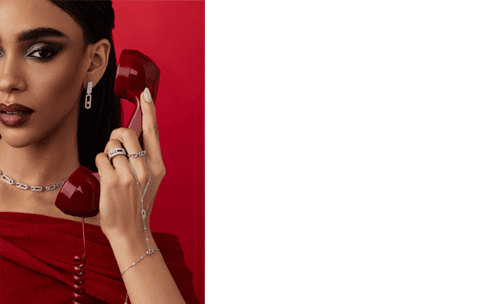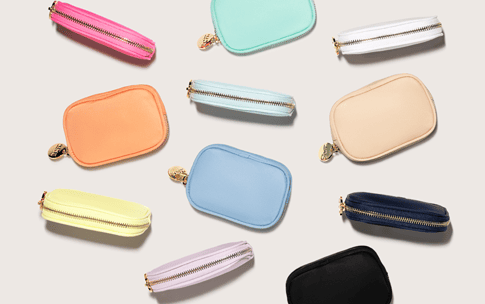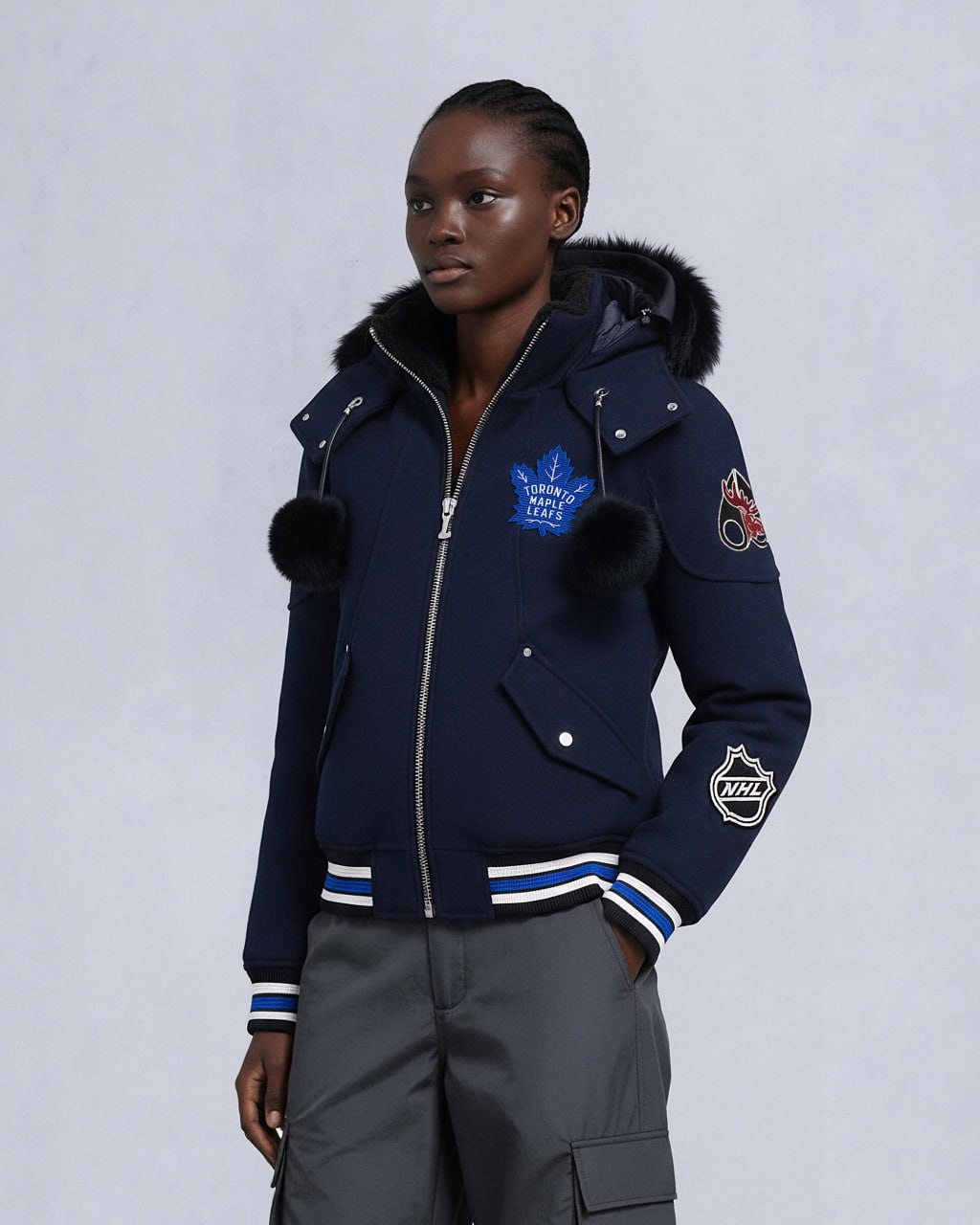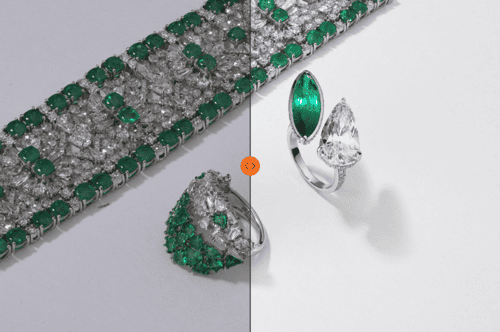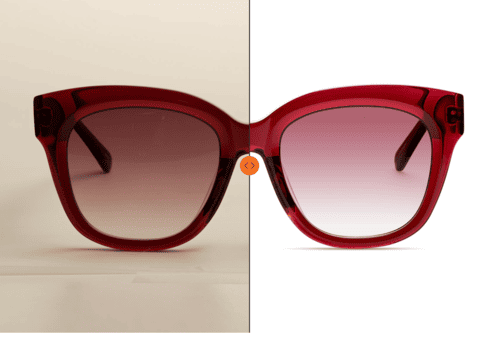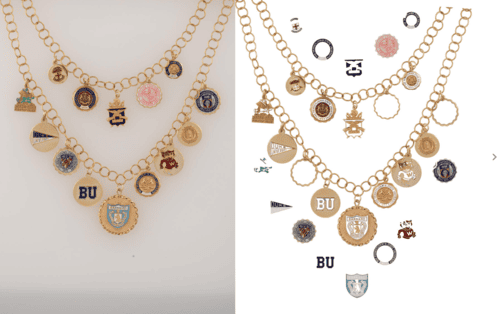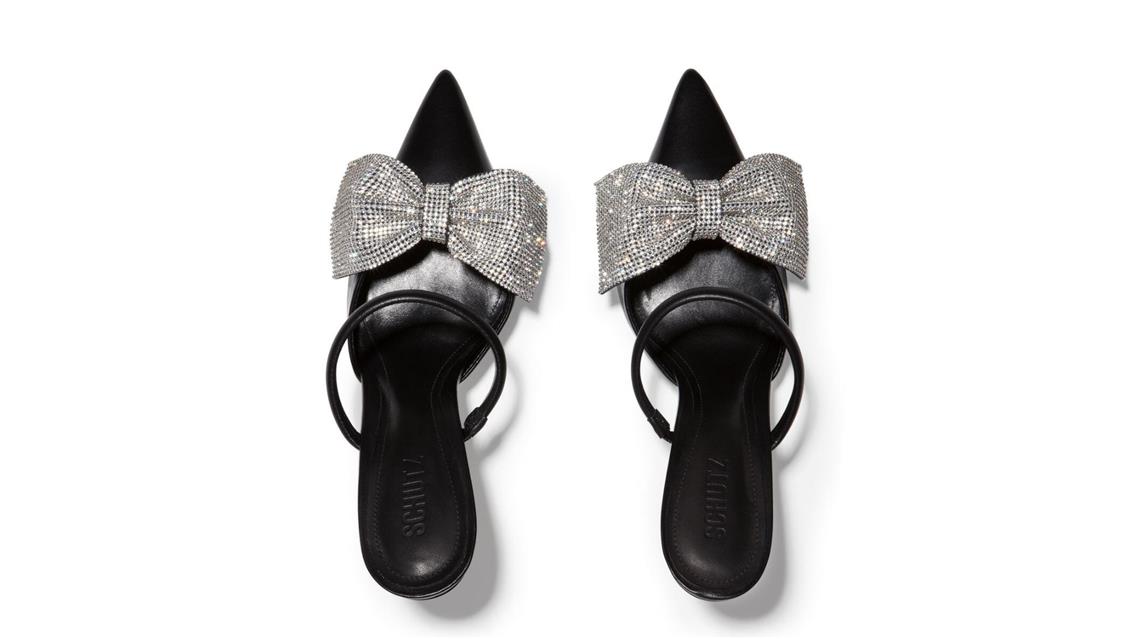Best Marketplaces for Your eCommerce Business Decoded
In today’s eCommerce landscape, online marketplaces have become magical converters of views to sales for any product or service. These platforms aren’t just an option anymore — they’re a necessity. Why? Because they bring millions of potential customers to your virtual doorstep.
Think about it: Amazon gets over 2 billion visits every month, Etsy attracts buyers who are already looking for unique handcrafted goods, and Walmart’s online marketplace is growing faster than ever, tapping into its household name recognition. Marketplaces are like bustling digital malls — shoppers are already there, credit card in hand, searching for what you sell.
But let’s not sugarcoat it. Selling on an online marketplace comes with its challenges. Competition is fierce, and marketplaces take a cut of your sales, not to mention the strict content guidelines you must follow. But if you can adapt and leverage their built-in traffic, you’re looking at a high-reward opportunity that would be nearly impossible to replicate on your own.
For most businesses, the decision to sell on a marketplace boils down to two things: visibility and trust. These platforms have already built the trust you’d spend years trying to earn. Buyers trust Amazon to deliver on time, trust Etsy to showcase authentic, artisan products, and trust Walmart for its affordability and reliability. By selling on these platforms, you get to borrow that trust — and with the right visuals, you can stand out among the competition and seal the deal.
In this article, we’ll break down how marketplaces work and why they’re such a crucial part of your e-commerce strategy. From traffic and credibility to the power of visuals, let’s dive deeper into what makes marketplaces an unbeatable channel for growth.

Key Factors to Consider When Choosing a Marketplace
Not all online marketplaces are created equal. Each platform has its own audience, rules, and opportunities, which means choosing the right one is a strategic decision. Before jumping in, it’s essential to evaluate your product, target customers, and the platform’s unique dynamics. Here’s a breakdown of the most important factors to consider.
Who Is Your Target Audience?
Start by asking yourself: where do your customers shop? Different marketplaces cater to different demographics and preferences.
- Amazon: Perfect for mainstream products and everyday essentials. It’s the go-to for buyers who value speed, convenience, and reliability.
- Macy’s: Best for mid-range to premium brands, especially in fashion, jewelry, home goods, and beauty. Macy’s attracts shoppers who are brand-conscious and prefer high-quality products with a touch of elegance.
- Etsy: Ideal for handcrafted, vintage, or niche products. It attracts shoppers looking for unique and personal items.
- Walmart Marketplace: Appeals to budget-conscious shoppers who trust the Walmart brand for affordable quality.
- Kohl’s: A top choice for clothing and jewelry shopping, Kohl’s appeals to families and value-focused shoppers who appreciate frequent sales, discounts, and a mix of practical and stylish options.
- Emerging Marketplaces: Platforms like Zalando or Farfetch cater to luxury or niche audiences, offering premium product visibility.
Knowing your audience’s shopping habits will help you focus your efforts on platforms where your products have the highest chance of success.
Marketplace Fees and Policies
Selling on marketplaces comes with costs, and they vary significantly:
Listing Fees: Some platforms, like Etsy, charge small fees to list your products, while others, like Amazon, offer a subscription-based model.
Commission Rates: Expect to pay a percentage of every sale. Amazon’s fees, for example, typically range from 8% to 15%, depending on the category.
Advertising Costs: Many platforms offer paid ad opportunities to boost visibility, which can eat into your profits if not managed wisely.
Additionally, be mindful of policies around returns, delivery expectations, and visual content guidelines, which can affect both your margins and operational complexity.
Visual Standards and Requirements
Visuals are the unspoken currency of online marketplaces. Each platform has its own guidelines, and meeting them isn’t optional — it’s essential for visibility and a high conversion rate.
Amazon: Requires high-resolution images with a white background for the main image, plus zoom-enabled photos.
Etsy: Encourages lifestyle shots and creative angles to match its artisan vibe.
Walmart: Demands clean, professional images without watermarks or distracting elements.
Fred Meyer: Focuses on clear, practical visuals for everyday products, emphasizing utility and simplicity.
If your visuals don’t align with the platform’s expectations, your product risks being buried in search results, no matter how great it is.

Competition in Your Niche
Marketplaces are crowded. For every product you list, there are likely dozens — if not hundreds—of competitors selling something similar. Research your niche before committing to a platform:
- Is your product differentiated enough to stand out?
- How saturated is the category?
- Are there opportunities for premium positioning through better visuals or branding?
Integration and Logistics
Finally, think about how easily a marketplace fits into your existing operations.
- Does the platform integrate with your current inventory management or fulfillment tools?
- Can you handle the marketplace’s shipping and delivery requirements?
- Does it offer services like Amazon FBA (Fulfilled by Amazon) to lighten the logistics burden?
Choosing the right marketplace is as much about practicality as it is about opportunity.
By evaluating these factors, you’ll set the foundation for not just choosing the right marketplace but thriving on it. In the next section, we’ll explore how to tailor your visuals for each platform to maximize your chances of success.
Top General Marketplaces in the USA

Amazon: Your Gateway to Millions
The one-stop shop for everything, Amazon attracts a broad audience seeking convenience and variety. Think clean, crisp, and professional – that's the mantra for Amazon product photography. High-resolution images showcasing multiple angles, zoom-ins for intricate details, infographics, and even 360° views for complex items like jewelry are your best friends. Remember, white backgrounds are strongly preferred, ensuring product focus and adherence to their guidelines.
Etsy: Where Craftsmanship Reigns
A haven for handcrafted, vintage, and unique goods, Etsy connects makers and collectors with a passion for individuality. Let your artistic side loose on Etsy! Capture the unique essence of your handmade or vintage items with creative storytelling photos.
Walmart: Products on Budget are Warmly Welcomed
Walmart, the value leader, attracts budget-conscious shoppers seeking everyday essentials and household goods. As for visuals, a pure white background is mandatory. No harsh shadows. Make sure that opacity is under 20%
Target: Affordable trends
Trendy and budget-friendly, Target focuses on design-conscious shoppers seeking apparel, home décor, and more. This marketplace highly recommends using lifestyle photography but also has its special requirements for product photography, for example, your images must have a white background with directional lighting coming from the left.

Macy’s: Even More Online
While Macy's is known for apparel, home goods, and beauty, the Macy’s Marketplace delves into new territories like toys, pet products, home improvement items, and even jewelry. Depending on the category there are different requirements for product images. In the apparel category, there could be a lifestyle photo or a product photo on a gray or even beige background while in the jewelry category brands should stick to a white background.
Costco: A Membership-Based Warehouse Club
Costco emphasizes bulk purchasing and value pricing, ideal for brands looking to reach a loyal and affluent customer base. Brand owners must prioritize quality and competitive pricing to meet Costco’s stringent supplier standards. A wide range of products are for sale, including jewelry, but it is primarily known as a wholesale retailer for various categories like groceries, electronics, and home goods.

Some More Popular Marketplaces for a Diverse Range of Products
Explore online marketplaces such as Sam’s Club, JCPenny, Kohl’s, Fred Mayers, and QVC for a diverse range of products from clothing and jewelry to home goods.
Just like these platforms, the key advantage is that their broad audience is seeking various items. Thus, prioritizing top-notch product photography is essential for differentiation among countless listings. Adhering to photo standards also enhances product visibility in filters.
Top Fashion–Oriented Marketplaces in the USA
While the general marketplace offers fantastic opportunities for e-commerce businesses from various industries, niche-oriented platforms undoubtedly attract target clients. could be more picky about businesses to partner with. Remember, when you are dealing with such platforms, not only do you choose them, but they choose you too. And here, your visual content on your website and social media plays a crucial role.

Farfetch
A haven for luxury fashion, Farfetch boasts a discerning global audience seeking high-end designer pieces. Think curated collections, impeccable photography, and storytelling that exude exclusivity.
Revolve
Catering to trendsetters and fashion influencers, Revolve offers a fast-paced environment perfect for showcasing your latest collections and seasonal drops. High-quality, aspirational visuals are key, alongside social media savvy.
Net-a-Porter
Established as a global authority in luxury fashion, Net-a-Porter attracts a sophisticated clientele looking for timeless elegance and iconic brands. Think polished product presentations, editorial-style photography, and collaborations with established names.
ASOS
Primarily targets the 18-25 age demographic with a focus on trendy and affordable clothing, aligning with fast fashion trends. This differentiates them from luxury-focused platforms like Farfetch. But it doesn’t mean that they draw less attention to visual content. ASOS Marketplace gives you the freedom to use product shots and videos both in outdoor settings and indoors, with natural lighting or professional studio set-up, nevertheless, you need to adhere to consistency in backdrop, lighting, and colors.

SSENSE
Actively identifies and invites brands that align with their vision and brand identity. Brands can also apply to join the marketplace through their website, showcasing their brand story, product offerings, and visual materials. SSENSE carefully evaluates all applications and only accepts brands that meet their high standards for quality, exclusivity, and brand identity. While information about visual content requirements is limited, SSENSE emphasizes maintaining a strong brand identity and curated aesthetic throughout its marketplace. Aligning your visual style with the platform’s overall aesthetics, latest trends, and feel is crucial.
Best Marketplaces to Sell Jewelry in the USA

Choosing the ideal online marketplace for your jewelry brand requires navigating a diverse landscape, each platform offering unique advantages and attracting distinct audiences. This strategic decision hinges on understanding your brand's essence and precisely who you envision adorning your creations.
Marketplaces for Mass Market Jewelry
Do your designs exude timeless elegance and cater to a wider audience? Consider the expansive avenues of Amazon, Walmart, Target, JCPenney, Fred Meyers, and Macy’s. These bustling marketplaces attract price-conscious shoppers seeking well-established styles and seamless fulfillment. While the intricacies of design might not command center stage, strategic marketing, stunning visuals, and competitive pricing can become your winning gems.
Marketplaces for Luxury and Timeless Fine Jewelry
Helzberg Diamonds is a well-known jewelry retailer specializing in diamond and gemstone jewelry. This platform is recognized for top-notch fine jewelry, with many customers appreciating their lifetime warranty and customer service.
Signet Jewelers is a prominent retailer in the jewelry industry, operating well-known brands such as Kay Jewelers, Zales, Jared, and James Allen.
Specializing in engagement and wedding jewelry, Blue Nile appeals to customers searching for classic designs. Brands should highlight gemstone clarity and metal craftsmanship through detailed product photography.
Forevermark is focused on ethically sourced, high-quality diamonds, appealing to classic luxury and enduring elegance.
Leo Schachter is known for premium craftsmanship and legacy in diamonds, catering to traditional and high-value jewelry markets.
Helzberg Diamonds, a trusted retailer specializing in fine jewelry, offers both in-store and online shopping experiences, making it a valuable partner for brands aiming to reach a diverse audience. Their curated selection emphasizes quality and craftsmanship, so potential partners should ensure their products align with Helzberg’s high standards.
By understanding and meeting a platform's requirements, brand owners can position themselves for the opportunity to sell their products on these reputable jewelry retail platforms, reaching a valuable audience of customers.
Marketplaces for Handcrafted and Bespoke Jewelry
Does your heart sing with the creation of bespoke pieces, each imbued with its own narrative? Explore the intimate galleries of Etsy, Amazon Handmade, and Bonanza. These platforms cultivate fervent communities of shoppers valuing individuality and cherishing the stories woven into each handcrafted treasure. Here, your brand's unique narrative and the very soul of your creations take center stage, attracting patrons willing to invest in exclusivity.
A haven for vintage and antique jewelry, Ruby Lane caters to collectors and history enthusiasts. Brands should emphasize intricate details through close-up images and provide a compelling backstory for their pieces.
Sherwood Management is a trusted retailer with over 100 stores across the U.S., offering fine jewelry brands access to a broad and loyal customer base. With a strong legacy, flexible financing options, and a robust online store, it provides brands with opportunities to reach customers both in-store and through convenient online shopping.
As a family-owned jewelry retailer, Rogers & Hollands emphasizes personalized service and locally rooted relationships. Brand owners should offer unique, high-quality products that resonate with the sentimental and gifting-driven jewelry market.
Marketplaces Well-Positioned for Jewelry Brands
Unlike broader marketplaces, luxury and modern jewelry platforms like The RealReal, NET-A-PORTER, or Farfetch boast curated selections, affluent clientele, and targeted marketing, attracting buyers who prioritize uniqueness, trendsetting designs, and premium quality. While such platforms prioritize luxury, opportunities exist for well-positioned, trend-oriented mid-range and emerging brands offering high-quality, unique pieces with strong brand narratives.
European Marketplaces for E-Commerce Brands
Entering the European market means adapting to regional preferences, compliance standards, and consumer habits. Here are some standout marketplaces for jewelry and other e-commerce products:
Fashion and Jewelry-Specific Platforms
Veepee (Europe-wide)
Focused on luxury fashion and accessories, Veepee is ideal for limited-time offers and exclusive collections. Invest in sleek, minimalist photography that communicates exclusivity.
Chronext (Europe-wide)
For fine watches and high-end jewelry, Chronext provides a specialized platform. Professional close-up shots of craftsmanship details are a must.
The Jewellery Room (Scandinavia)
This niche platform promotes Scandinavian and global jewelry brands. Their focus on storytelling and sustainable luxury means your product photography should align with Nordic minimalism and eco-conscious design.
General European Marketplaces
Zalando (Germany and Europe-wide)
A leading fashion and accessory marketplace in Europe, Zalando values consistent and high-quality visuals. Their requirements often include model shots alongside isolated product images.
Cdiscount (France)
With a strong presence in electronics, home goods, and jewelry, Cdiscount is ideal for affordable to mid-range products. White backgrounds and detailed product descriptions are standard.
Allegro (Poland)
Poland’s largest marketplace offers a growing audience for eCommerce brands, especially those targeting Central and Eastern Europe. Consistent imagery and competitive pricing are key.
Galeries Lafayette (France)
Known for its luxury department stores, Galeries Lafayette’s online marketplace is perfect for premium jewelry brands. Artistic lifestyle photography can enhance appeal.
ManoMano (Europe-wide)
Although more focused on home improvement, ManoMano has a growing lifestyle section. Jewelry brands with a contemporary edge might find opportunities here.

Mytheresa (Europe-wide)
This premier luxury fashion platform based in Munich, Germany, offering a curated selection of high-end apparel, accessories, and jewelry for women, men, and children. Established in 1987 as a boutique, it expanded online in 2006 and now serves customers in over 130 countries.
Visual Content Essentials for European Marketplaces
European consumers often prioritize sustainability, authenticity, and storytelling. To resonate with this market:
- Focus on storytelling visuals: Combine minimalist, lifestyle-focused images with clean, product-centric shots.
- Include compliance details: Some platforms require additional metadata, such as materials and certifications, embedded in images or descriptions.
- Consider multilingual overlays: Infographics or text within visuals should be translated for localized marketplaces.
Following Specifications for Product Photography & Video Content to different platforms
Navigating the visual content requirements of different marketplaces is no easy feat. Each platform has its own specific guidelines, from image resolution and background colors to angles and lighting, making it critical to adapt your content accordingly. A one-size-fits-all approach simply won’t cut it in this competitive landscape.
Why Adhering to Platform Guidelines Is Non-Negotiable
Ignoring platform-specific specifications can lead to:
Rejections and Delays: Marketplaces like Amazon or Etsy will reject listings that don’t comply, delaying your product’s availability and potentially missing key sales opportunities.
Costly Re-Dos: Having to reshoot or edit images to meet marketplace requirements is an expensive and time-consuming mistake.
Poor Visibility: Non-compliant visuals are often penalized in search algorithms, drastically reducing your product's chances of being seen by potential buyers.
Imagine spending weeks preparing your product launch only to have your listings rejected or buried in search results. The cost isn’t just financial — it’s missed opportunities, wasted time, and a tarnished reputation.
DIY Content Creation for Marketplaces vs Hiring a Professional
When DIY Approaches To Content Creation Make Sense
Not ready to hire a professional? That’s okay. DIY content creation can be a smart move in certain scenarios:
Tight Budgets: If you’re running a small business or a side hustle, your resources might be limited. DIY lets you control costs while maintaining creative flexibility.
Testing New Products: When the goal is to validate demand before investing heavily. DIY visuals can provide enough clarity for customers without blowing your budget.
Building Confidence: If you're new to selling online, creating your content can help you learn the ropes. Your first attempt might not be perfect, but practice builds skill. Plus, plenty of user-friendly tools like Canva, smartphone cameras, and editing apps can help elevate your visuals.
Start small but aim for improvement. Your first DIY attempt might not be perfect, but practice will make your visuals increasingly competitive.
Hiring Professionals: Why It’s Worth the Investment
While DIY has its merits, there’s a reason professional content creators remain in high demand. Professional photographers, videographers, and editors bring expertise and specialized tools that can elevate your product visuals to industry standards — or beyond.
Advantages of Hiring Professionals:
- Expertise in Marketplace Standards: Professionals understand platform-specific guidelines (e.g., Amazon’s white background requirements or Etsy’s focus on lifestyle imagery). They’ll ensure your visuals comply with these standards, so your products shine in search results.
- High-Quality Equipment: Professional-grade cameras, lighting, and editing tools result in crisp, attention-grabbing visuals that DIY setups often can’t replicate.
- Time-Saving: Outsourcing allows you to focus on your business while the experts handle the visuals.
- Consistency: Professionals can create a cohesive visual style across multiple products and platforms, reinforcing your brand identity.
- Access to Trends: They’re often up-to-date with visual trends like 360-degree views or shoppable videos, ensuring your listings stay competitive.
When to Hire Professionals:
- When you’re launching a new product and want to make a strong first impression.
- If you’re entering a highly competitive niche where standout visuals are critical.
- For marketplaces that demand premium aesthetics, like Zalando or Farfetch.
- If you lack the time, tools, or skills to produce high-quality visuals on your own.
Pro Tip: Look for professionals with marketplace-specific experience.
The Role of a Trusted Visual Content Partner
The complexity of meeting these diverse requirements underscores the need for a reliable partner who understands the nuances of each platform. That’s where Lenflash steps in.
- Seamless Adaptation Across Platforms Lenflash ensures your visuals are tailored to each marketplace’s specifications without compromising your brand’s identity. Whether you need crisp jewelry shots for Kohl’s or evocative lookbook photography for Zalando, we deliver exactly what’s required.
- Consistency Without Confusion Consistency is key to building trust with your audience. Our team ensures your products look cohesive across platforms, even as we adapt to varying guidelines.
- Avoiding Costly Errors By partnering with Lenflash, you eliminate the risk of pricey re-dos. We know the rules of every platform inside and out, so your visuals are compliant from the start. No wasted time. No wasted money.
- Boosting Sales with Impactful Content Great visuals drive conversions. Our expert team creates photos and videos that showcase your products in their best light, highlighting features, textures, and emotions that compel viewers to buy.
Ready to Unlock Your Brand‘s Online Presence Potential?
Don't let subpar visuals hold your business back. Partner with Lenflash and unleash the power of captivating commercial photography and videography. Remember, in the online arena, flawless visuals are a necessity.
